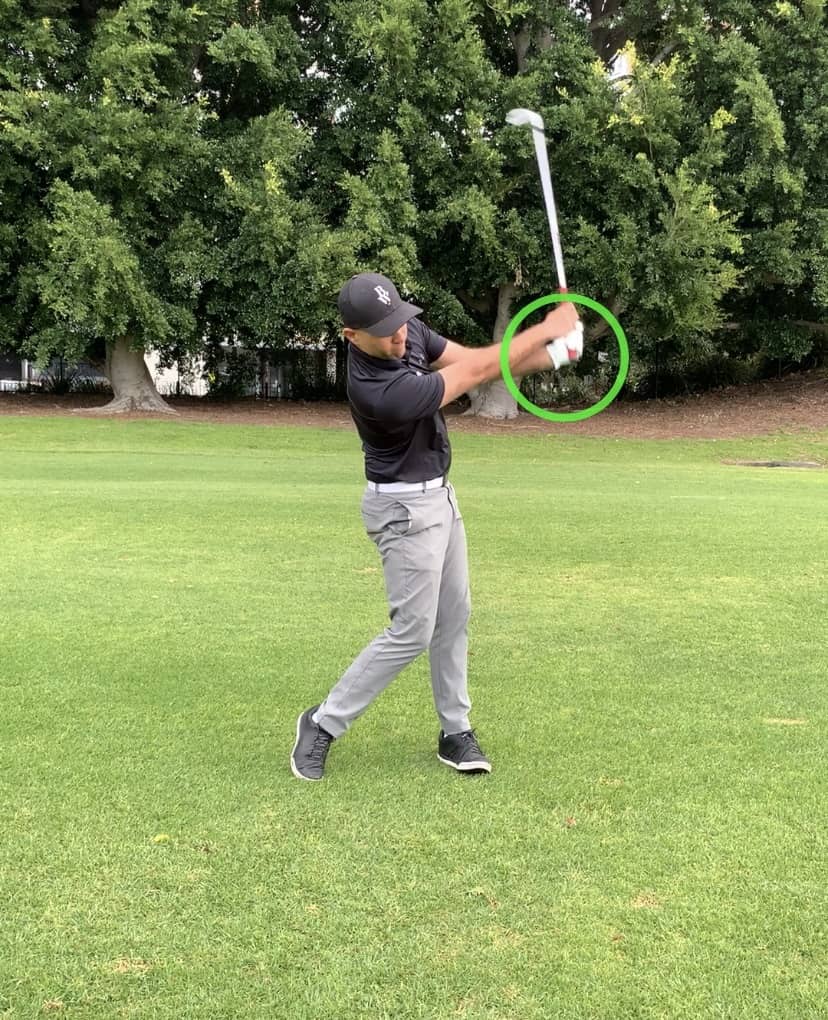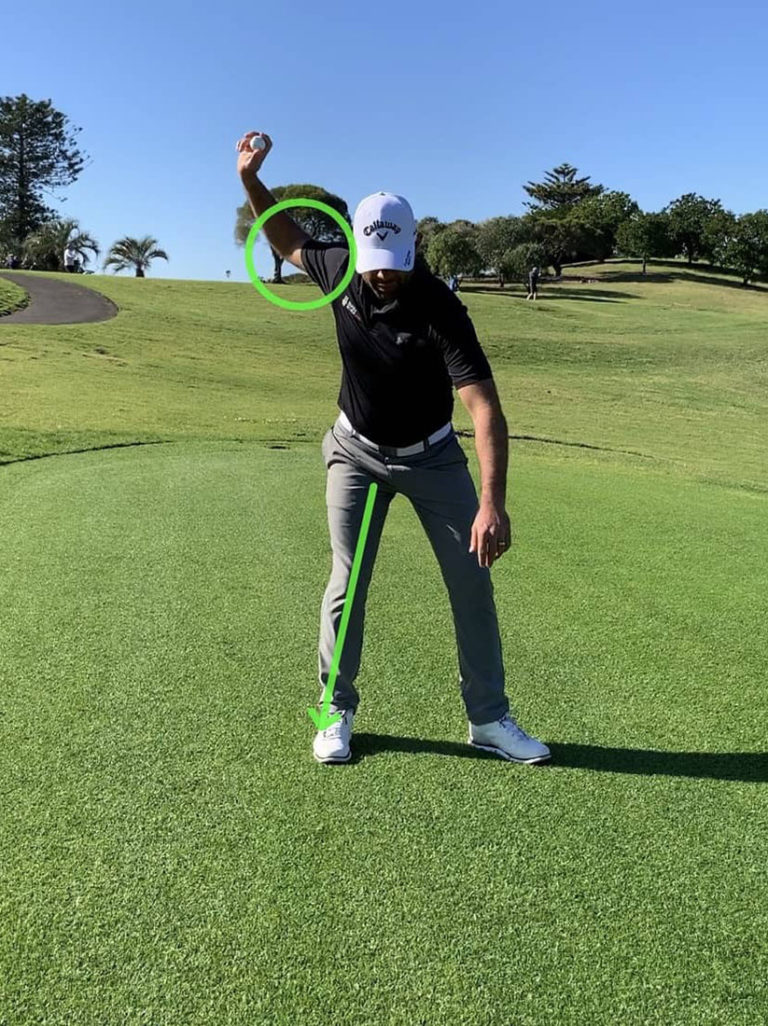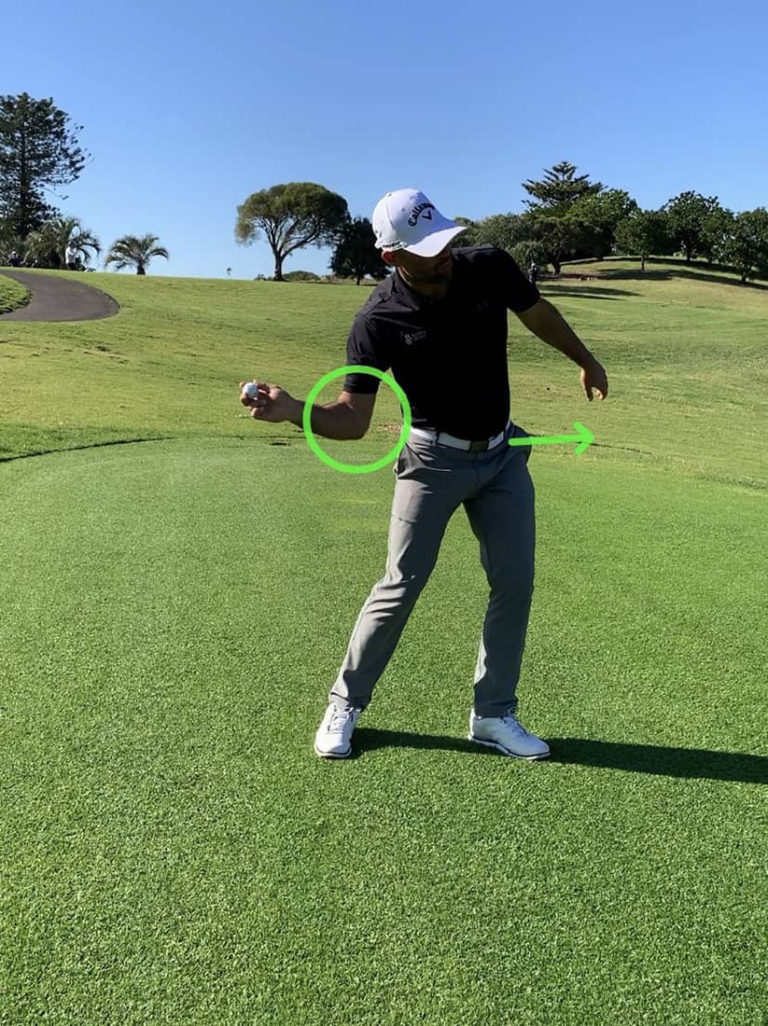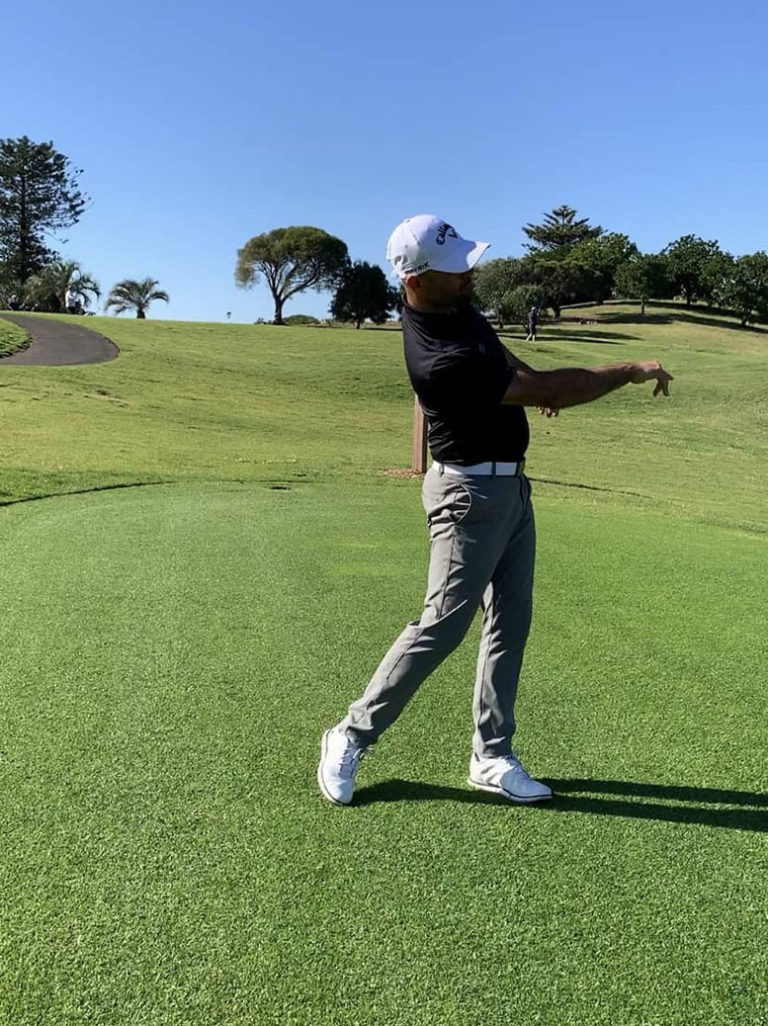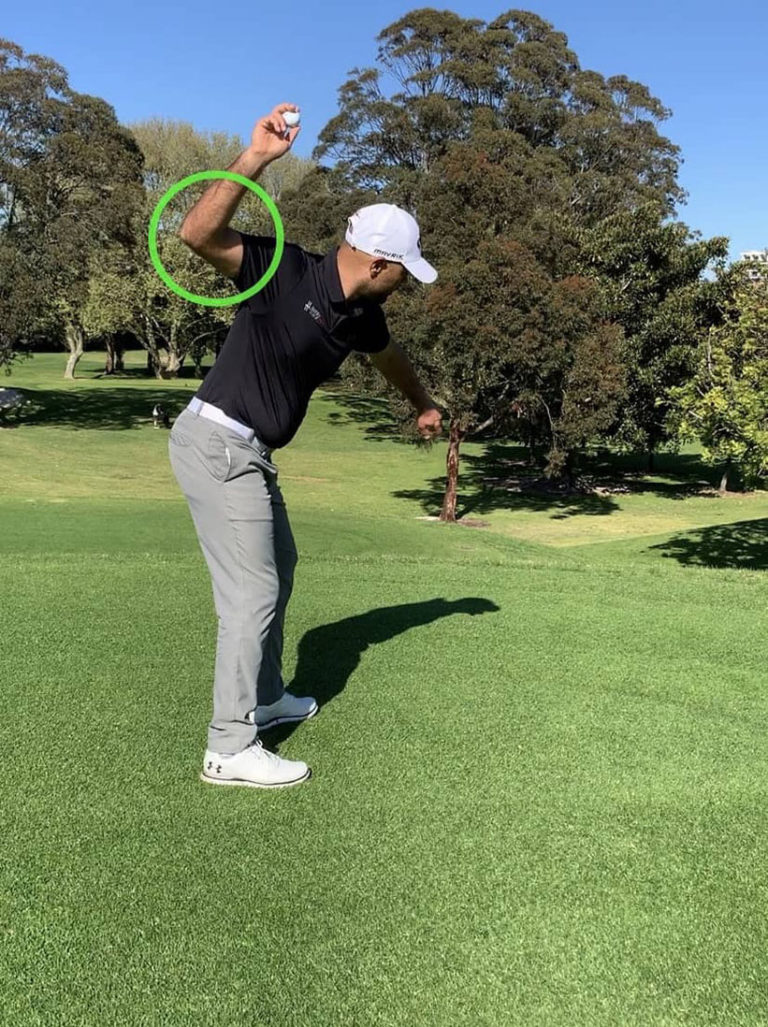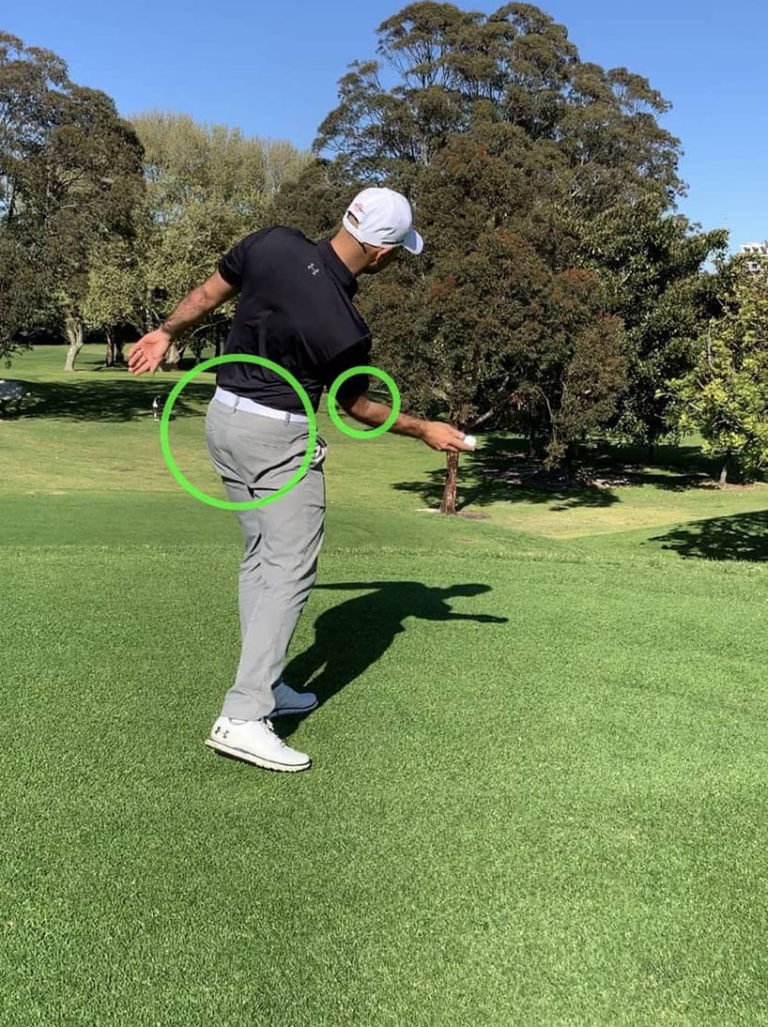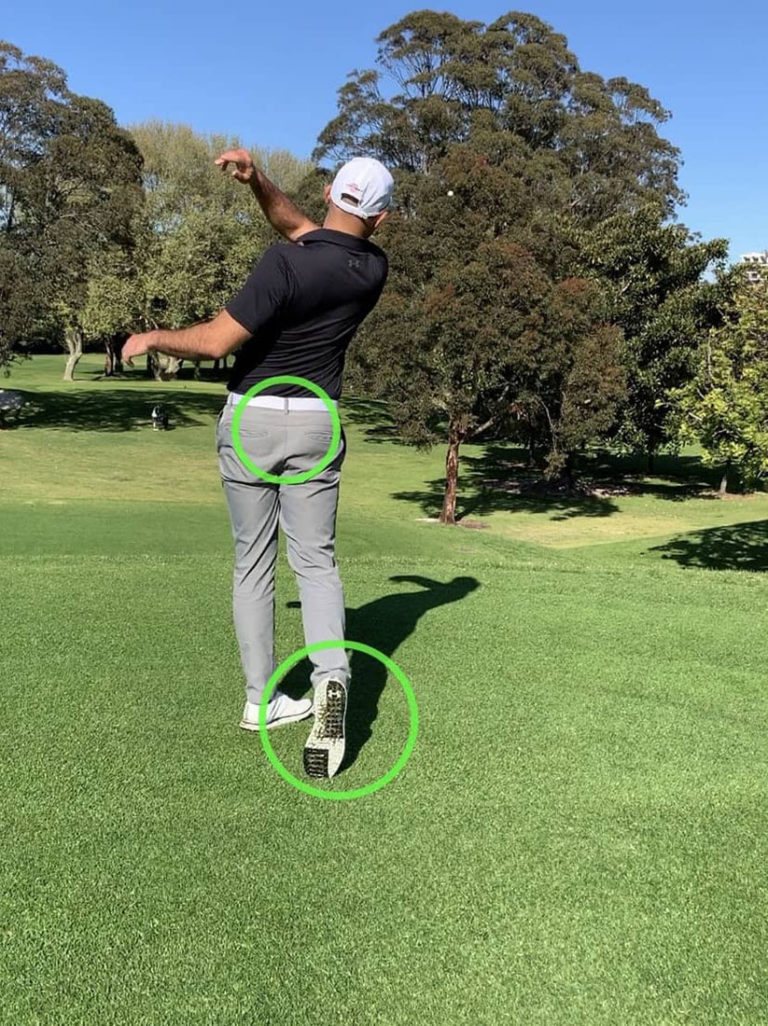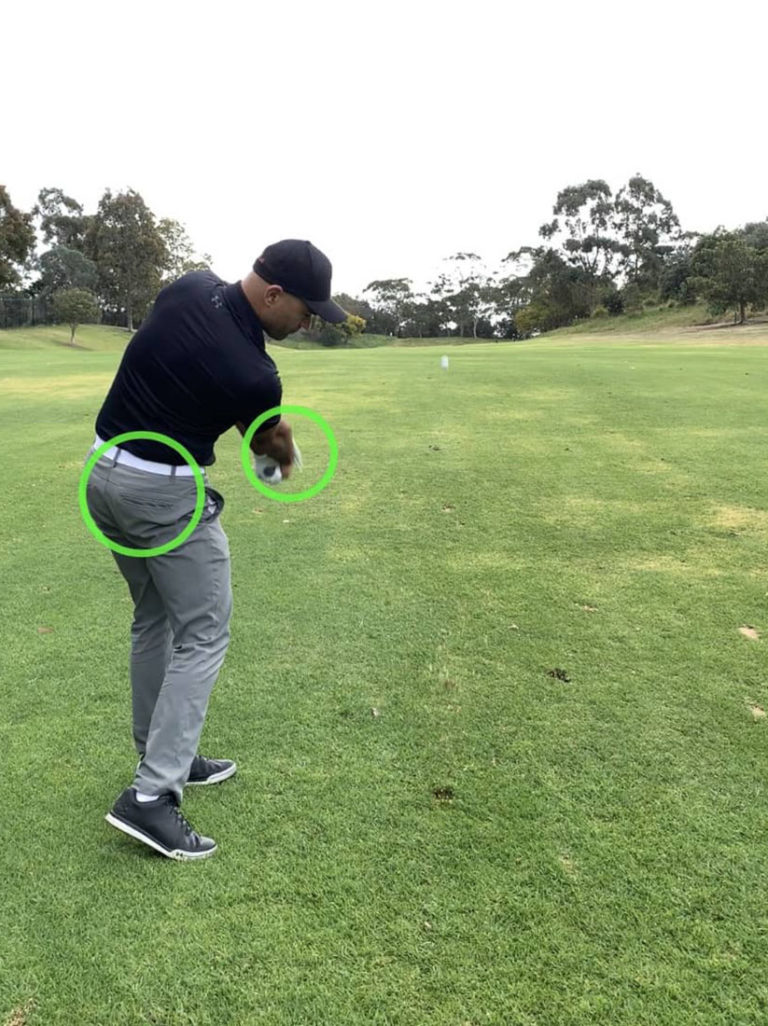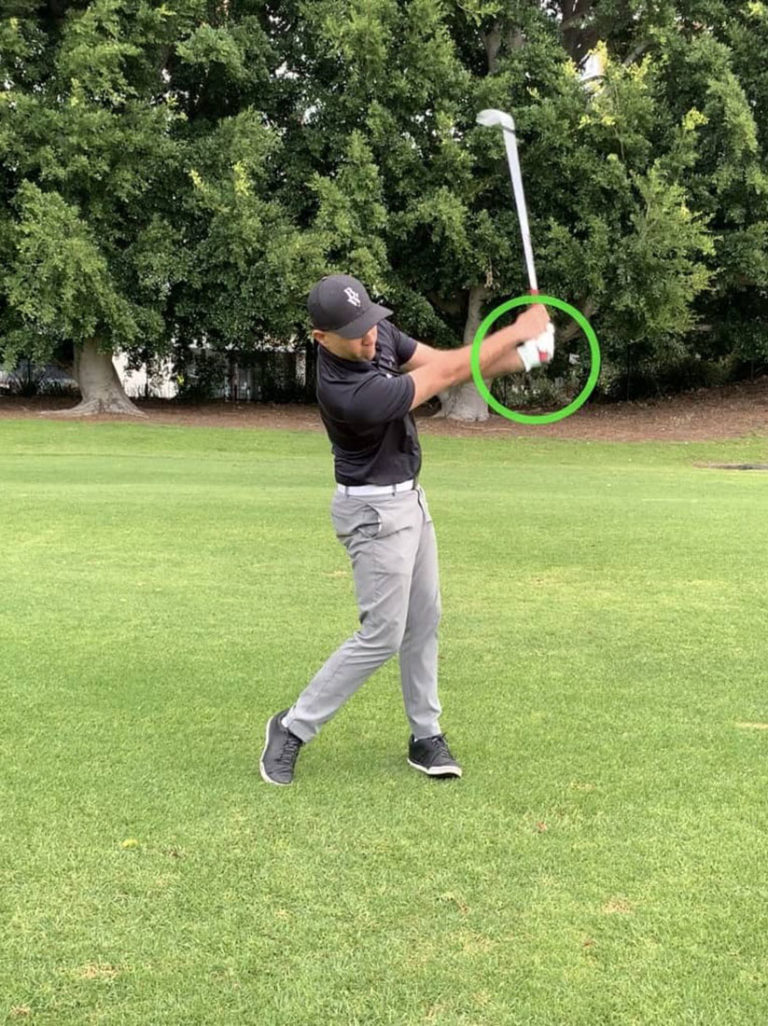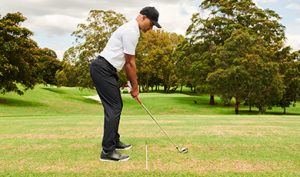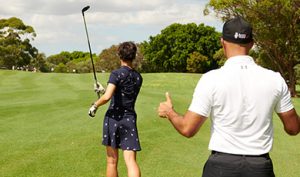Chances are, you are swinging your golf club based on whether you are right or left-handed. However, it is important to realise that your non-dominant hand plays a crucial role in your swing.
The question is, how much power and force actually comes from your dominant side, and what could go wrong if you use it too aggressively?
*For ease of reference throughout this article, I will describe the right-handed golf swing. Reverse it if you are a lefty!*
THE IMPORTANCE OF A PASSIVE DOMINANT SIDE IN GOLF
As we are well aware, golf is a two-sided sport, with each side playing a key role in the swing. Each of our arms through to our hands are responsible for the movement back (backswing) and movement forward (follow through).
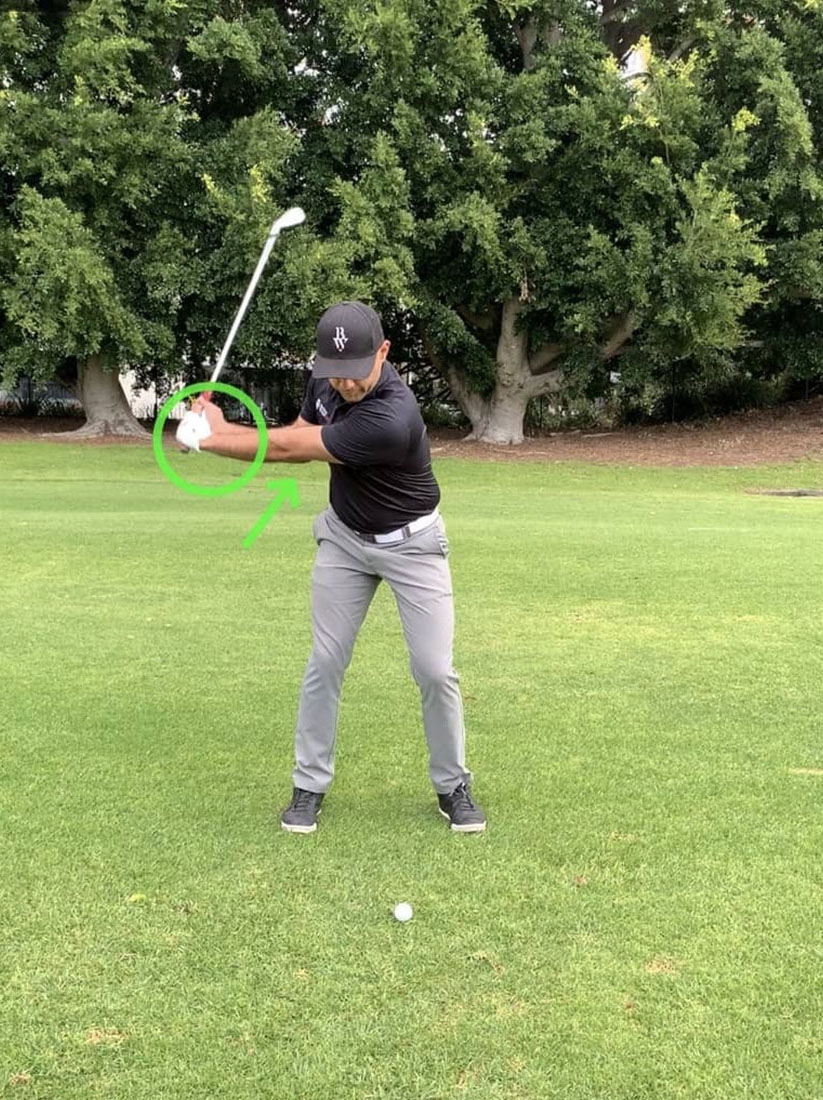
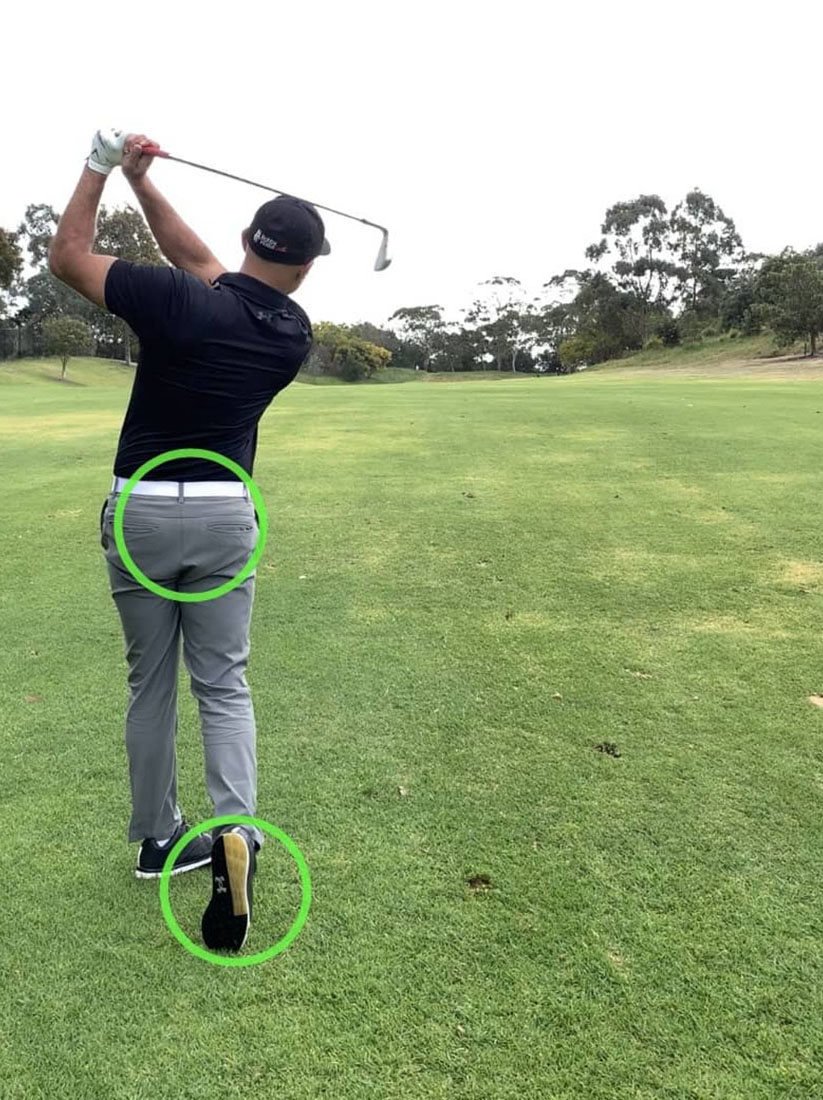
Typically, the non-dominant side is responsible for the backswing in a slow movement with the dominant side coming through with more speed and aggression to the follow through.
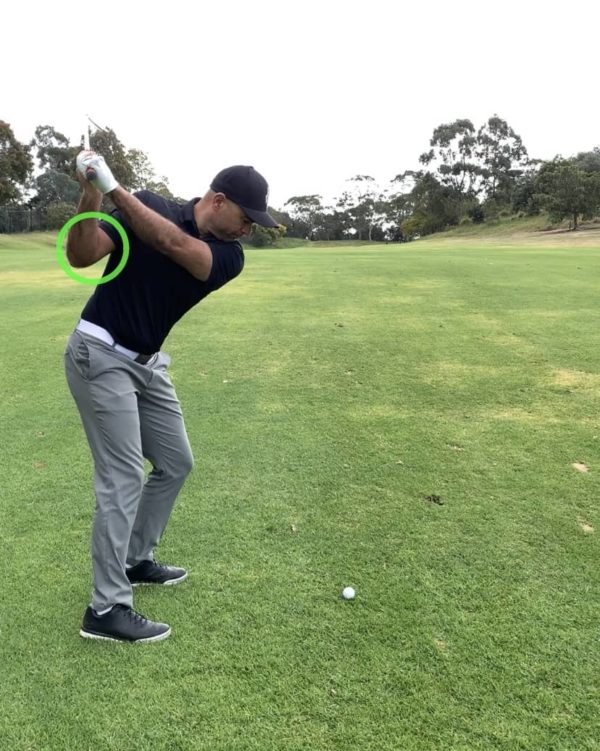
HOW DOES A GOLF SWING COMPARE TO OTHER SPORTS?
When comparing golf to other sports, it is important to consider the “tension factor” and how important our non-dominant side actually is. Let’s look at a few examples:
- Throwing a ball – One would never stand completely still and use only the right arm to throw a ball. Rather, if we time a throw correctly, we step forward with our left side, plant our left foot and drive forward, releasing the ball right at the end.
- Throwing a punch – To generate power, one cannot only throw the arm towards a punching bag and expect to exact any kind of force. A step has to be taken with the left foot with weight pushed into the ground and only then does the right arm come through with force.
- Kicking a ball – We have the luxury of running towards a ball that sits on the ground or is moving, but as we are about to kick it, we need to plant our left side before pivoting through the hips and extending our leg and foot to kick the object.
I could go on and use many other sports as examples, but the pattern is clear: our dominant side is made dominant with the help of our opposite side.
WHY ARE GOLF GLOVES WORN ON THE NON-DOMINANT HAND?
As right-handed golfers we wear a glove on our left hand, but why? Because most of the pressure should sit in our first three fingers of our left hand, not in the thumb and index finger. The right hand? Not much pressure at all.
As we know, we need a certain amount of hinge in our wrists during the swing. The left hand should be responsible for this. If there is tension in the right hand, the hinging process becomes extremely difficult.
WIDTH IN THE SWING
Creating a stretch and coil in our backswing is extremely important and leads to power on the way through. This can only be achieved with a passive right side and the left shoulder doing most of the “stretching”.
As we know, the left arm should be relatively straight as this creates the width. And the right arm, just like in throwing, needs to gradually fold moving back as the wrists hinge. The more the right arm can play a supporting role on the way back, the more extending with acceleration it can do on the way through.
If the right hand overpowers the backswing, the club will tend to be snatched and taken away from the target too early.
SUPPORT IN THE SWING
We are looking to create stability through our legs in the golf swing, and need to evenly distribute our weight from our right side to the left for maximum efficiency.
At address, we need our legs shoulder-width apart with more support being provided through the right leg than the left. This helps us load and coil our weight to efficiently move across to the left.
Like with most other sports, if we use too much of the right side on the way down we will lose important energy. The left side is responsible for creating energy transfer.
SPEED THROUGH THE ARMS FOR DISTANCE
Once we have created coil through our shoulders in the backswing, created resistance through our legs, and achieved the right amount of weight transfer, it is time to create some speed on the downswing.
If we try to achieve this with our right arm only, we will waste valuable energy. Our fingers, wrists, and forearms are the fastest parts of our arms so we need to use these more than our shoulders or biceps.
We all agree that a really well struck shot feels like a whip of the hands. Again, this can only be achieved if room has been created by the left side. Think of skimming a stone on water where the legs are used to propel the arms.
FINAL THOUGHTS
Even though we are dominant through a certain side, it does not mean we need to use that side to create force. By keeping your dominant side more passive, you will hit the ball further and with more consistency.
WANT TO WORK ON YOUR SWING?
If you are interested in taking your golf game to the next level, I offer professional online coaching, personalised drills, remote coaching, and more.
Please feel free to reach out to me if you have any questions or if there is a particular topic you’d like to see addressed on my blog.

